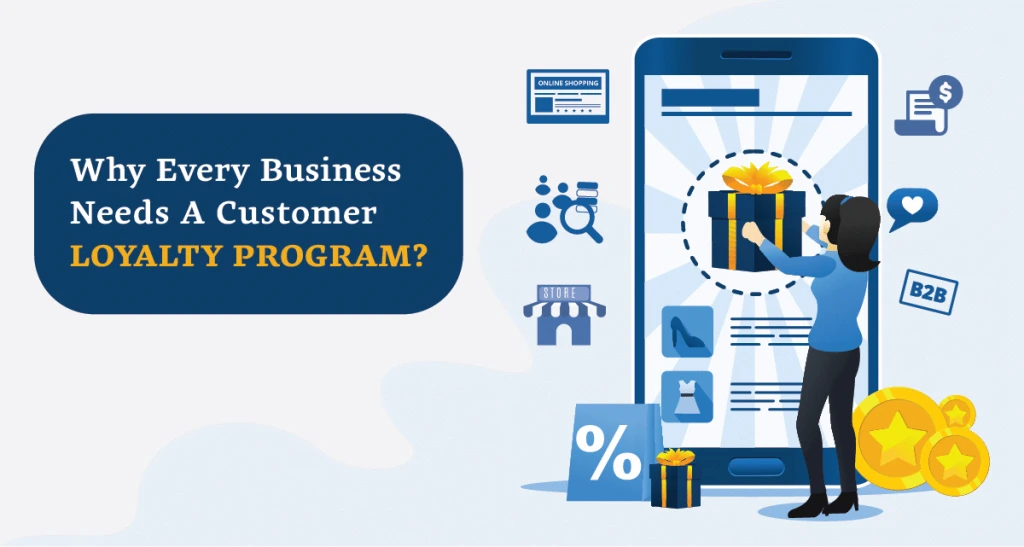A decade ago, people based their purchase decisions mainly on how much value they got for their money. This in turn gave rise to the traditional spend-and-get model of loyalty programs. Slowly but surely… customer experience became more important. A Microsoft report states that 96% of customers think customer service is important in their choice of loyalty to a brand.
Customer Experience Breeds Loyalty
Customers no longer make purchase decisions based solely on the price of a product or service. Instead, they evaluate the entire purchase experience taking into consideration things like convenience, branding, quality, or reputation. Loyal tendencies with companies are developed through accumulations of these individual experiences which in turn mold the overall experiences. This change in customer expectations and thought process prompted customer loyalty programs to evolve. When one thinks of customer loyalty programs, the popular ones that spring to mind are Starbucks Rewards or airline frequent flyer programs. A shared trait among these loyalty programs is that they all operate in the B2C space. This might give you the impression that loyalty programs work only for B2C businesses, but that couldn’t be further from the truth! B2B businesses are increasingly turning to rewards programs to build customer loyalty. And with the current COVID-19 crisis, customer loyalty is more important than ever and B2B programs are rapidly adapting.
Omni-Channel Loyalty Programs
Proper customer loyalty is achieved via integration throughout the entire customer experience. Customers engage with your brand on a variety of platforms, devices, and channels. They expect each one of them to work together seamlessly. A bad experience on one channel can impact the entire web of channels. Omni-channel loyalty programs focus on developing an delivering the best loyalty experience across all channels, seamlessly. This means delivering meaningful engagement through every touchpoint, in-store point-of-sale (POS), online transactions, and even the mobile app.
Receipt Scanning Technology
Recently a new loyalty technology called receipt scanning is being used very frequently. Receipt scanning provides the customers of a brand the flexibility to shop at any store and still claim their loyalty points for that brand. Enabling customers to scan and submit their purchase receipts empowers brands and manufacturers to truly maximize their loyalty programs.
Rewards Programs Are Differentiators
58.7% of internet users believe that earning rewards and loyalty points is one of the most valued aspects of the shopping experience. Rewarding customers for their loyalty in meaningful ways should therefore be one of the top priorities of any business. Businesses should be investing in loyalty technology and loyalty programs to increase their chances of doing this successfully. If done well, this can be a strong differentiator in creating long lasting customer loyalty.
Wholesalers, Retailers, E-Commerce
With technological advancements, loyalty programs are not limited to certain types of business. Omni-channel engagement can be implemented by wholesalers, retailers, and e-commerce stores. The loyalty program structure will differ, but the ending value a loyalty program delivers is the same regardless of the kind of business. Successful loyalty programs deliver improved customer engagement and retention, reduction in competitive pressure, and an increase in revenues.
Data Science Driven Loyalty
The tough part is to find the right partner who can help a business design, develop, and deploy a loyalty program with the highest probability for success. One of the most important factors in accomplishing this is to leverage scientific data analysis. Only with research into customer behavior, can a business strike the right balance of rewarding customers to earn their loyalty, while also keeping costs down to ultimately increase the bottom line.
Loyalty Programs will not only help you maintain and move forward during the current COVID-19 crisis, but they will help you achieve long-term growth. According to a 2018 US Retail CX Trends Report, 77% of consumers say they stayed loyal to specific brands for 10 years or more. With endless research to back up the claims of loyalty programs driving short-term and long-term growth, a loyalty program should be a part of every business’ strategy.


